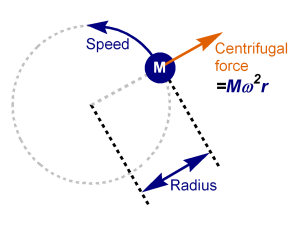So someone on Facebook reposed a video from a Flat Earther arguing that the centrifugal force of the earths spin should fling the ocean out into space. We have water on earth, so how is this possible unless the earth is really just flat and not spinning at all? Well my friend science shamed these people with a reasonable argument, but I thought that I would really hammer some hard science into the argument. Rocket Science that is…
In the video they show a person spinning a water soaked ball and how the water spins off the surface like a disk. So yes, this experiment works, but let us try another one where we blow that ball up to 7,917.5 miles in diameter, then we stick a 760 mile diameter iron and nickel ball in the center of that, and fill the rest with a mixture of other rocky material. Now we have a ball with an approximate mass of 5.972 × 10^24 kg vs a 0.43 kg soccer ball.
It is an established fact that the force of gravity is linked to the mass of an object. We know this to such a high degree that we can use math to propel objects into deep space and hit a relative speck like Saturn’s moon Titan.
Earth’s gravity pulls everything near it’s surface down with a force of 9.8 meters per second squared (m/s^2). I know this number well because I work with micro-controllers that have accelerometers on them and sure enough, they read about 9.8 m/s^2 whenever they are still and perpendicular to the earth. This is the amount of force pulling the oceans down onto the surface of the earth. Actually is is what is pulling us all down onto the earth.
Interestingly, the farther you get from the earths surface, the less gravitational forces you feel. This is because gravitational force is not just linked to mass, but also distance from the surface of the object of mass. That is why people “float” in space.
There is another very important set of calculations that are needed to debunk this flat earther’s argument and that will tell us how much force will be trying to push the oceans out into space by the rotation of it’s spin. To do this calculation you will need to know the following information:
- Radius of the Earth: 3959 Miles
- Speed of the object as it’s surface (Linear Speed): 460 Meters per second
- Mass of the object: 5.972 × 10^24 kg or 1 earth mass (yes, that is a thing)
 Figure 1 shows how the relationship between all of this looks and how we can find the Centrifugal acceleration force at the earth’s equator.
Figure 1 shows how the relationship between all of this looks and how we can find the Centrifugal acceleration force at the earth’s equator.
I did cheat a bit and used an online calculator to get 0.0332109 m/s^2 as the force trying to toss everything into space. So now we just look to see if the force pushing out is grater than the force pulling in… and… 9.8 is larger than 0.0332109. Now this video also says that you have to add the force created from the earth’s orbit around the sun, but you can’t just add the two together. The interplay of those forces are more complex due to the distance of our orbit and the spin of the earth relative to the orbital path. The difference is so small that we don’t even need it to disprove this.
Sooooo….. Gravity wins!!! by like 9.7667891 m/s^2
End of debate!
Look, what I am really getting to with this is that though there are a lot of unknowns out there, science has also figured out how a lot of stuff works with an amazing degree of accuracy. While we don’t fully understand what gravity is, we know exactly what it’s effects are in our universe and have since the days of Isaac Newton.
Though the earth may look flat to us flying in an airplane, it is just because we are SO small in comparison. We are like ants in a stadium and it is hard for our human brains to comprehend things on that scale. Science allows us to figure out and make sense of those things that are very complex and very large.
So how do I know these things when all I have is an Arts degree? Well, I paid attention in school and learned that things like centrifugal acceleration and gravitational effect are things that we know a lot about. I found out how to find the math equations needed to calculate such things. Now this information is accessible to anyone with an internet connection and there are inexpensive electronic sensors that can measure these effects.
Most of all remember that it’s only rocket science and the earth has more mass than a soccer ball.


